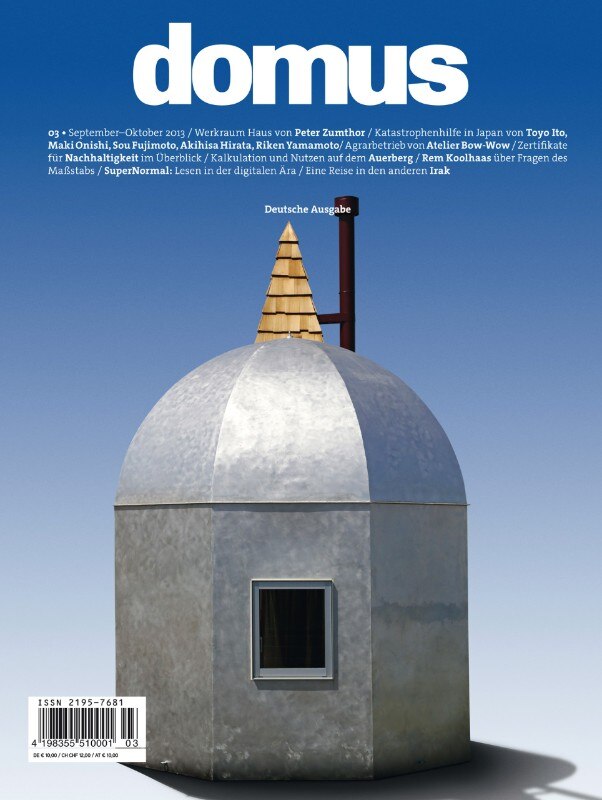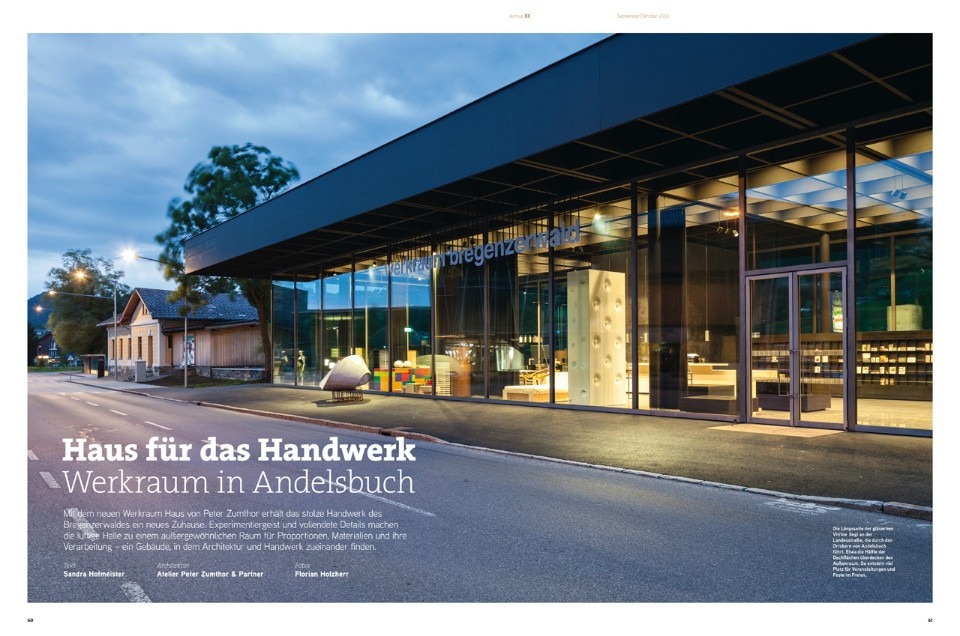A persuasive example of both (craftsmanship and architecture) is the recently completed “Werkraumhaus” in Andelsbuch. Swiss architect Peter Zumthor has planned the building as a platform for the members of the “Werkraum Bregenzerwald”, an association of regional craftsmen. The Werkraumhaus is a showroom with a café, large shop-windows for products and spaces for events. About 40 members of the Werkraum were included in the construction process and many of the very remarkable finishes show the results of elaborated traditional techniques. Sandra Hofmeister’s article points out the refinement in the building's making and explains its results. A portrait of the region Bregenzerwald by Florian Aicher provides valuable insight into the tradition of artisans.
Heide Schuster shares the analyses of different Green and Blue building certificates: her article conveys a better understanding and overview of different parameters for certifications.
Another focal point of this issue is the attitude of participation that becomes evident in projects of Baupiloten – or in buildings developed after the Japanese tsunami: DOMUS Germany portrays the Koisuru-Buta building by Atelier Bow Wow and a lot of communal “houses for all“, which were developed by Tezuka Architects, Riken Yamamoto, Toyo Ito, Maki Onishi and other Japanese architects for people who literally have lost almost everything but their lives in the tsunami catastrophe.
Writer Markus Zehentbauer visited the Auerberg, a furniture label, founded and run by Christoph Böniger. His aim is similar to Giulio Iacchetti’s initiative “Internoitaliano”, presented in the same issue: both labels have a strong relationship to local craftsmen and materials. Hubertus Adams writes about Renzo Piano’s dream of energy autarchy, party realised in the small high-tech-hut Diogene, developed for Vitra.


